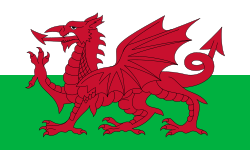Welsh folklore

| Part of a series on the |
| Culture of Wales |
|---|
 |
| People |
| Art |

Welsh folklore is the collective term for the folklore of the Welsh people. It encompasses topics related to Welsh mythology, folk tales, customs, and oral tradition.
Welsh folklore is related to Irish and Scottish folklore due to its Celtic traditions, as well as English folklore, it also shares similarities with Breton and Cornish folklore due to shared history[1]
History
[edit]Following the Laws in Wales Acts 1535 and 1542, people that used the Welsh language were no longer eligible for public office in Wales. As such, Significant numbers of the Welsh gentry now only spoke English and Welsh language and culture was limited to the middle and lower classes, which played a central role in the public attitude to Welsh culture.[2]
Sources
[edit]There are many examples of folk literary traditions in Nennius' book Historia Brittonum, written around the start of the 9th century. There are scattered motifs of Middle Welsh prose, and many references can also be found in the works of the bards: for example in some of Taliesin's works and in that of the Poets of the Princes.
It is only comparatively recently that the Welsh folk tales were collected and published. There are English language volumes such as The Cambrian Popular Antiquities by Peter Roberts (1815). One of the first Welsh language books is Ystên Sioned ("Janet's Pitcher", 1882), but this was preceded by a number of articles in Welsh language magazines. Y Genhinen ("The Leek") was established to promote studies of folk literature and to safeguard the traditions of Wales.
See also
[edit]References
[edit]- ^ Owen, Elias (1896). "Welsh Folk-Lore". Retrieved 2 December 2011.
- ^ "BBC Wales – History – Themes – The 1536 Act of Union". BBC. Retrieved 2022-09-07.


 French
French Deutsch
Deutsch